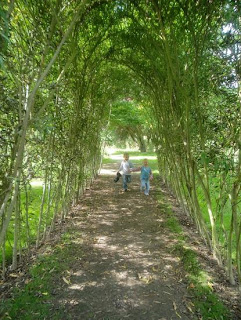Last weekend we decided it was time to visit the wonderful grounds of Leeds Castle. A ticket allows entry all year round and, whilst expensive, provides access to the maze, castle, aviary, adventure playground and beautiful acres and acres of outdoor space.
We took a packed lunch and settled down by one of the many lakes to begin our feast. We were positioned underneath a willow tree and i had a quick scope around the area to see if anything interesting was in sight. After a short time my eyes settled on a bright green glow, which even against the lush grass provided a striking contrast - the bright, late summer daylight reflecting off every ripple and curve.
No, i hadn't found an extremely expensive emerald, lost thousands of years ago by one of the royal inhabitants of Leeds Castle. The owner was none other than a Privet Hawk-moth caterpillar. At the beginning of summer the boys and I had set a target to locate and photograph more of the giant Hawk-moth caterpillars, which richly pepper the English countryside. Our appetite had been well and truly wet by the enormous Elephant Hawk-moth caterpillar we discovered at our local nature reserve last year (see earlier post).
The Privet Hawk-moth is the largest moth in these fair isles, but interestingly our Elephant Hawk-moth caterpillar was significantly larger than the latest caterpillar we found. It was late season too, so i assume it was very close to building a cocoon - ready for a state of dormancy as the colder months bite.
Don't get me wrong, this was still a beast and the first time i have set eyes on one. How many more wonders of nature will i find on our family adventures. Endless opportunities and the great outdoors await.








